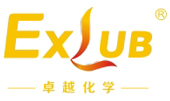


With the development of electronic products to miniaturization and high integration, adhesives have become an indispensable key material in electronic manufacturing. From chip packaging to machine assembly, adhesives significantly improve the stability and service life of electronic products through precision bonding, thermal conductivity and insulation. In this paper, we analyze the core value of adhesives in enhancing the performance and reliability of electronic devices from the practical application scenarios.

First, precision components of the stress buffer
Micro electronic components (such as MLCC capacitors, crystals) are susceptible to mechanical vibration, high-performance adhesives can provide protection in the following ways:
Cured to form an elastic adhesive layer, absorbing more than 80% of the mechanical shock energy (according to ASTM D4169 vibration test standards)
Matching the coefficient of thermal expansion (CTE) to the substrate, reducing the risk of stress cracking during temperature changes.
Efficient thermal management program
Electronic equipment heat dissipation needs are becoming increasingly stringent, thermally conductive adhesives can simultaneously realize the dual function of bonding and heat transfer:
Silicone adhesive with thermal conductivity ≥ 3.0W/(m-K) is widely used in LED heat dissipation module.
Phase change thermally conductive adhesive triggers phase change at 60℃, reducing contact thermal resistance by 40% (test standard ASTM D5470)
Third, environmental sealing protection system
Waterproof and moisture-proof demand for electronic products to promote technological innovation in adhesives:
Three-proof adhesive (moisture, salt spray, mildew) at 85 ℃ / 85% RH environment to maintain stable performance for 500 hours (IPC-CC-830B standard)
UV curing adhesive within 5 seconds to form a sealing layer, blocking dust particle size > 5μm pollutants
Fourth, miniaturized assembly process optimization
Adhesives for micro device assembly to provide a new program:
Conductive silver adhesive to replace the traditional solder joints, line width accuracy increased to 0.1mm (for flexible circuit board connection)
Light-curing adhesive positioning accuracy of ± 10μm, to meet the needs of precision assembly of MEMS sensors
Conclusion
It is recommended to fully communicate with suppliers on application scenarios and prioritize products that have passed IEC 61249-2-21 halogen-free certification. Through scientific adhesive selection and process optimization, the environmental adaptability and market competitiveness of electronic products can be significantly improved.
Email to this supplier